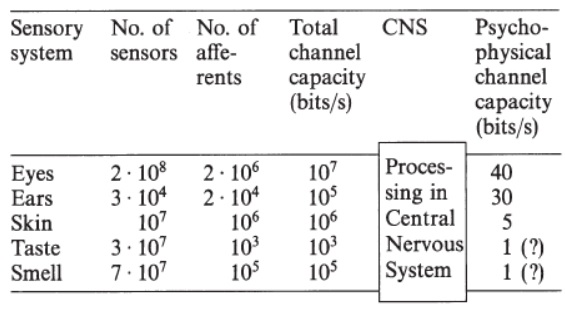
The mouth is rich in information. Because the modern media society is based so much on language, we tend to forget about the mouth. Instead, vision and hearing have been given special status as the two most important senses. For example, psychologist Zimmerman writes about the nervous system in light of the information theory. Zimmerman publishes a table that is interesting because it does not match what our biology looks like.
The Nerve Density Reveals the Mouth
Zimmerman imagines that the eyes are our biological “broadband” that can transmit 10 million bits per second. Psychologically, however, we can only perceive 40 bits/second from the eyes and 30 bits/second from the ears, he says. Taste and smell are far behind: they have an estimated psychological transfer rate of 1 bit/s each. But if you count the number of nerve fibers, it doesn’t seem right. Judging by the density of the nerve, the mouth is rich in information. It can convey more information than the ears or eyes.
Zimmermann, M. (1989). The nervous system in the context of information theory. Human physiology (pp. 166-173). Springer, Berlin, Heidelberg.

Mouth More Important Than Eyes
Our culture has built-in values. Of our five senses eyes are highest in rank. God is often symbolized as an all-seeing eye. An old Jewish proverb says that the eyes are the mirror of the soul. The philosopher René Descartes, who lived in the 17th century, believed that the soul was connected to the pineal gland in the brain. He illustrated how the soul connected with the eyes through nerves. But the evolution that has created us prioritizes differently.
We can live without both sight and hearing, but not without a mouth. The mouth is thus rich in information. It combines taste, smell, and touch and is therefore our most complex sensory organ. If the body is the temple of the soul, the mouth is the door in, guarded by teeth that are prepared to bite off. The tongue then symbolizes the priest who stands in the door and welcome in. The tongue is so connected with nerves that it is almost like a visible part of the brain.
explore